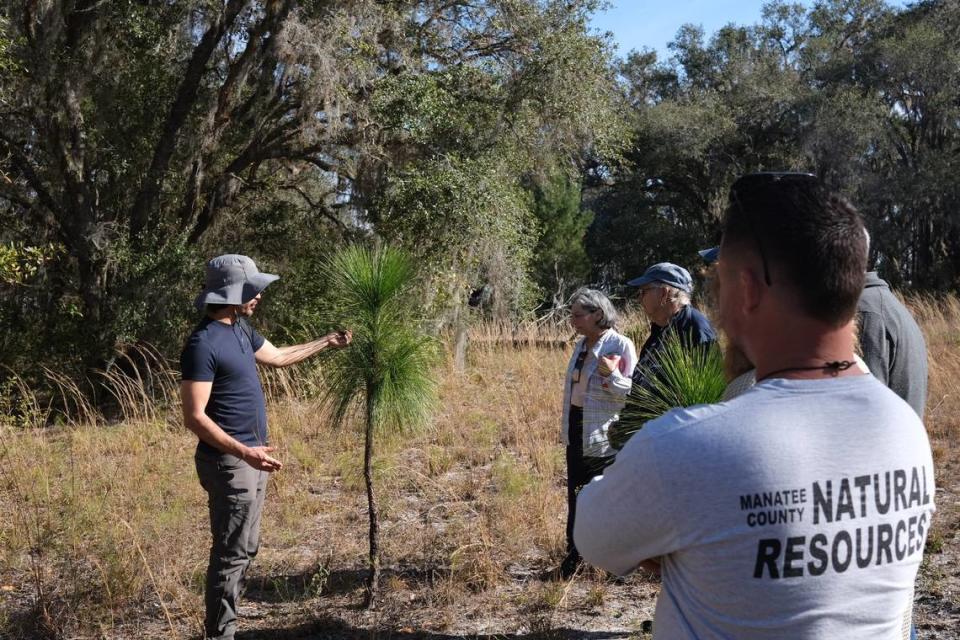How to explore Florida in a covered wagon — and see what’s left of a vanishing landscape
Like a journey in a time machine, a trip to Duette Preserve in Manatee County will take you back to Florida as it once was.
Driving northeast from Bradenton, the dense urban sprawl of the coast gives way to the rapidly expanding boundary of civilization in the once-sleepy village of Parrish.
Like hungry monsters with a taste for Old Florida, new housing developments rise every mile here. They gobble up swaths of trees and fields and spit out concrete communities with names ironically reminiscent of what they’ve just digested. Coming soon: one built around an artificial lagoon.
Next are the farmlands. The two-lane country road rolls past vast acreages where potatoes, tomatoes and even some citrus trees are still grown, much like they have been since the early days of Manatee County.
Though the number of agricultural lands dwindles by the year as development pushes east and longtime farming families tap out of the business, glimpses of old rural Florida can still be found in this part of town.
An hour later, and you’ve finally reached it: Duette Preserve.
With any luck, you feel very far away from the noise and bustle of society.
But here’s a little secret: You now stand at a gateway to an ancient society that existed long, long before our own.
On these 22,000 acres, there’s a unique, weird and wonderful community of plants, animals and ecosystems that evolved with this land for thousands of years before human influence.
They exist only in Florida — and they’re losing ground fast.
Thanks to the foresight of conservationists, that’s not the case here at Duette, where endangered habitats and animals, like the Florida scrub jay and its synonymous Florida scrub, are actually rebounding.
Let’s venture in and see what lives in these wild lands, and why it might be worth saving more of them.
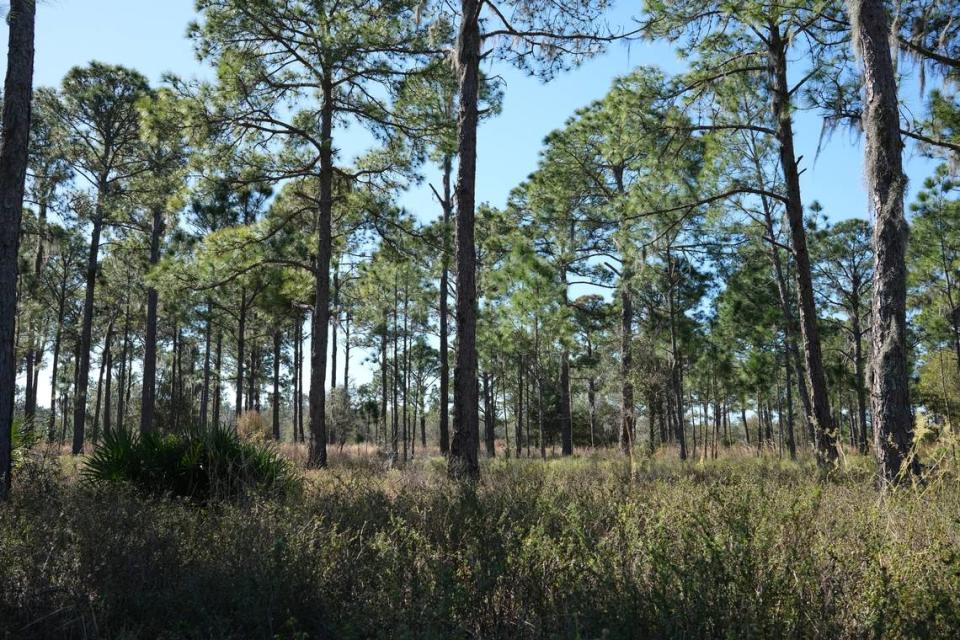
Exploring Duette Preserve
On a Saturday in February, a group of strangers loads into a covered wagon for a guided tour of Duette Preserve.
Sponsored by the Manatee Fish & Game Association and Manatee County Government, the wagon tours are held four times a year. They’re led by a naturalist and a park ranger.
Heading down the gravel road and into the expanse of nature, a world not often glimpsed by many Floridians opens up all around.
Closely nestled colonies of saw palmetto bushes contrast with lush grasses of soft green, light cream and sun-baked bronze that form a billowing quilt of prairie ground cover, dotted here and there by lonely pines.
The sound of the breeze is more audible here, far from city traffic. It’s amplified in the tree boughs and joined by gentle insect songs.
This all could have easily been a phosphate mine, says naturalist Elliot Prout, who leads the excursion.
“I want people to experience this because maybe they have heard of Duette Preserve, but they haven’t actually seen it in person,” Prout said. “With all the development, there are very few places that exist like this in Manatee County.”
Key to drinking water supply, wildlife
The county purchased the first 10,000 acres of the preserve in 1986, and more tracts of land were added piecemeal over the next dozen years. The funds came from residents who voted to tax themselves for conservation — much like the recent 2020 land referendum.
The preserve now protects water quality above and below ground. It provides a natural, pollution-preventing buffer around the headwaters and feeder creeks of the Manatee River. Downstream, those waters tie into Lake Manatee, the county’s main drinking water source.
It also protects a prime part of the Florida aquifer. Pumps on the preserve provide millions of gallons of drinking water per day.
“You come to understand why it’s important for our water supply, the health of the wildlife population and our future,” Prout said.
The wagon meanders on through the preserve, occasionally stopping so everyone can file out a closer look.
Prout leads the group to the site of a wide-trunked pine that was once harvested for turpentine, with a bite out of its bark layer to show for it. This one is a survivor. Unlike most of the old-growth pines, it was not chopped for lumber after its resin was tapped.
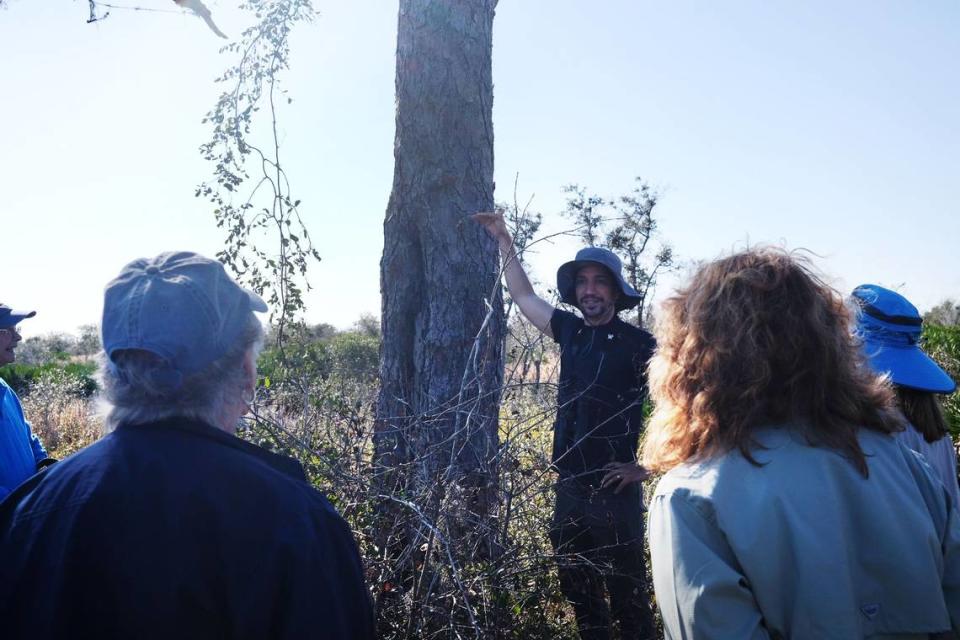
Prout explains how the slow-growing longleaf once dominated Florida before it was overharvested by early settlers.
The trees can live for centuries, and they form the foundation of a habitat that provides shelter for a host of rare Florida plants and critters. Other benefits include their resilience to hurricanes and fire.
Continuing efforts at the preserve aim to restore the longleaf pine’s presence. Neatly planted rows of them grow slowly upward, year by year.
A little down the road comes a much anticipated moment of the tour.
It’s bright, open and sunny here amid the scrub, with hardly a tree in sight. That’s just how the scrub jays like it.
Before long, there’s a chirp and flash of blue in the shrubbery. A pair of jays flit in and out of the brush, drawing delight from the tour group.
Scrub jays, which are endemic, or unique, to Florida, aren’t the only rare wildlife at Duette. The menagerie spans North America’s largest snake to its smallest falcon to Florida’s only endemic mammal — the wide-eyed, sand-loving Florida mouse.
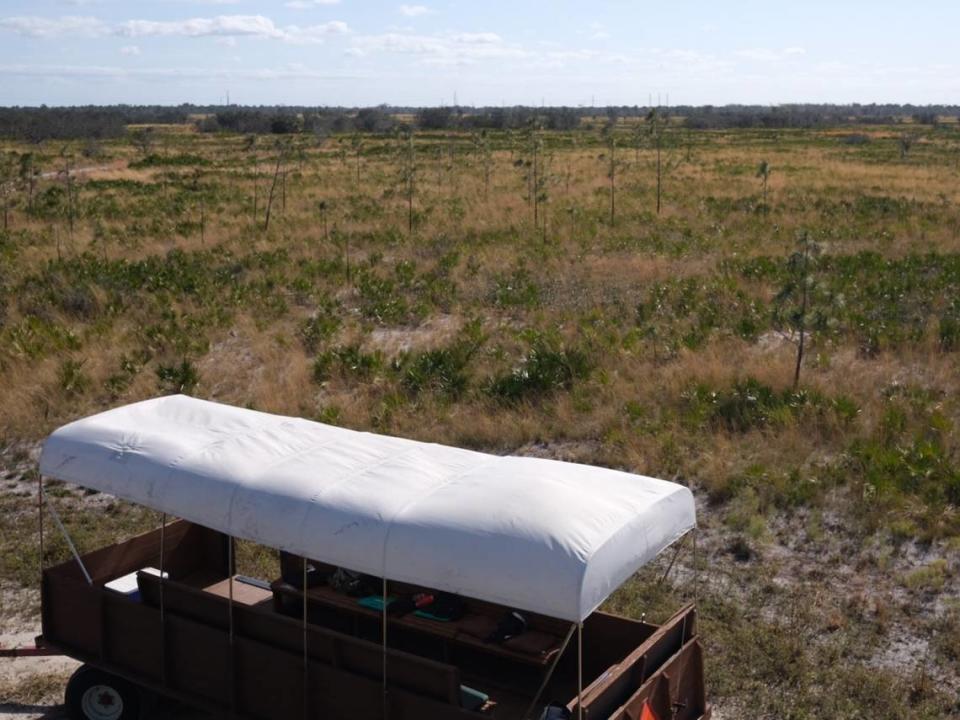
Florida panthers and other rare sights
A video clip of a Florida panther traveling through the preserve went viral earlier this year.
Jerry Miller, the ranger who helped lead the wagon tour, has also captured rare footage of a Florida panther at the border of Duette.
Miller said park staff believe two Florida panthers have been frequenting the area — a larger male cat and a smaller one of undetermined gender.
“They follow the river,” Miller said.
The endangered cats require vast amounts of land to thrive, with males requiring territory of up to 200 square miles.
Establishing more wildlife corridors through the center of the peninsula will be crucial to their future, conservationists say.
All around Duette, other parts of eastern Manatee County have been deemed “opportunity areas” that could help fill gaps in wildlife corridor expansion.
But all around Florida, land conservation efforts face a ticking clock in a race against development.
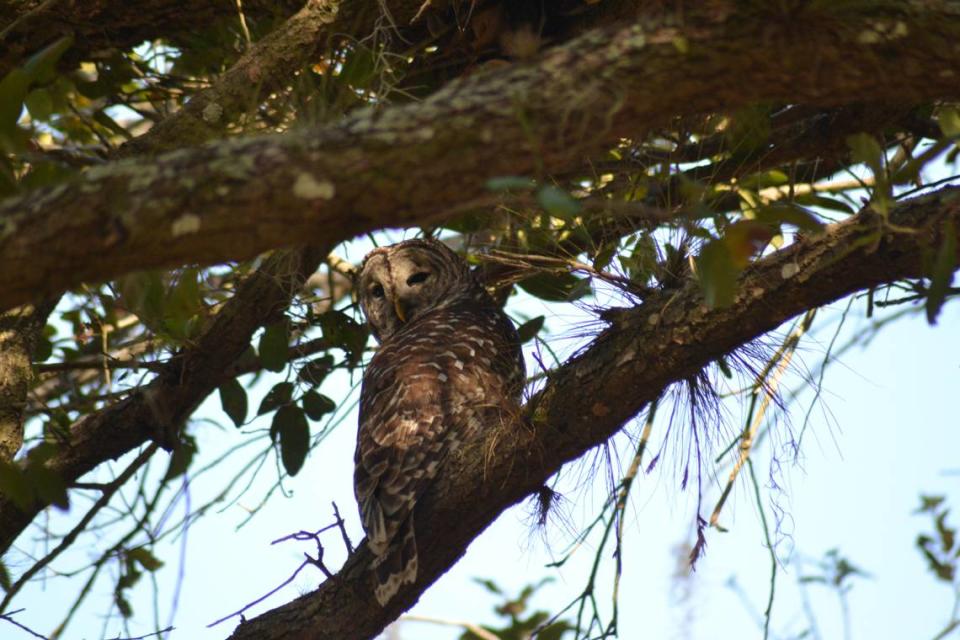
While the Florida panther has been Miller’s most epic wildlife encounter at the preserve, his favorite resident critters are the rattlesnakes. Some of his close encounters are documented on his wildlife-themed Instagram page.
Another elusive snake that lives on the preserve is the threatened eastern indigo, named for the iridescent luster of its scales.
In all his hours logged here, Miller has only caught one glimpse of Drymarchon couperi, whose genus name, drymarchon, translates roughly to “ruler of the forest.”
Sieh dir diesen Beitrag auf Instagram anEin Beitrag geteilt von Jerry’s Wild Life (@jerrys_wild_life)
Indigos are the largest snake native to North America, growing up to 9 feet long. They are highly dependent on access to large areas of pine flatwoods and other Florida habitats for foraging and mating.
They’re also dependent on another animal that lives at the preserve — the gopher tortoise.
Gopher tortoise burrows provide habitat not only for their shell-dwelling architects but also a host of other creatures that take advantage of the large network of tortoise tunnels — a kind of underground herpetological hostel.
A new program started by county government officials relocates gopher tortoises that are displaced by development to Duette Preserve.
Other large wildlife found at the preserve include bobcats, coyotes, deer, feral hogs and even the occasional Florida black bear sighting, Prout says.
Sieh dir diesen Beitrag auf Instagram anEin Beitrag geteilt von Oyster River Ecology, Inc. (@oyster_river_ecology_inc)
Inspiring the next generation of conservationists
Later that same Saturday, a different group loads onboard the wagon for a trip through Duette.
This youthful crew is from the Palmetto Boys & Girls Club, and they’re on a weekend nature adventure with Damon Moore of Oyster River Ecology, a nonprofit with a focus on habitat restoration.
Moore, also the president of the Manatee Fish & Game Association, said Duette was his first choice when he was tapped to lead a series of field trips for the club.
“You can see as close to pristine habitat as Manatee County gets,” Moore said.
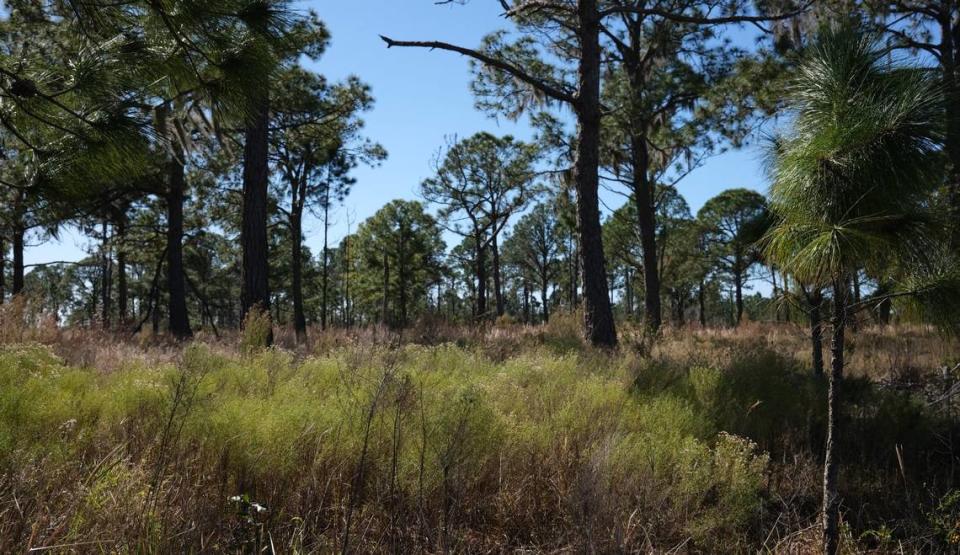
For the students, Duette’s impressive prairies drew comparisons to the African vistas of “The Lion King.”
“They were just loving it,” Moore said.
It’s also a chance to stoke some curiosity in science.
“We’ll take a walk, and if we see something interesting, we’ll talk about it,” Moore said.
For a closer look at plants, Moore has the kids form a circle and see how many different kinds they can see in the area.
“They are blown away that when you look closely, there are dozens of interesting plants. It’s a fun way to begin exploring and understanding the concept of ecology,” Moore said.
Moore is planning another trip with the group to seek out carnivorous plants, which are among some of the rare Florida sights found at the preserve.
“We have these cool, comic book-like things that are growing in our area,” Moore said.
Of Duette Preserve, Moore says:
“It’s one of the areas where you can point at and say this is going in the right direction. (The county) should feel good about it and people should know about it.”
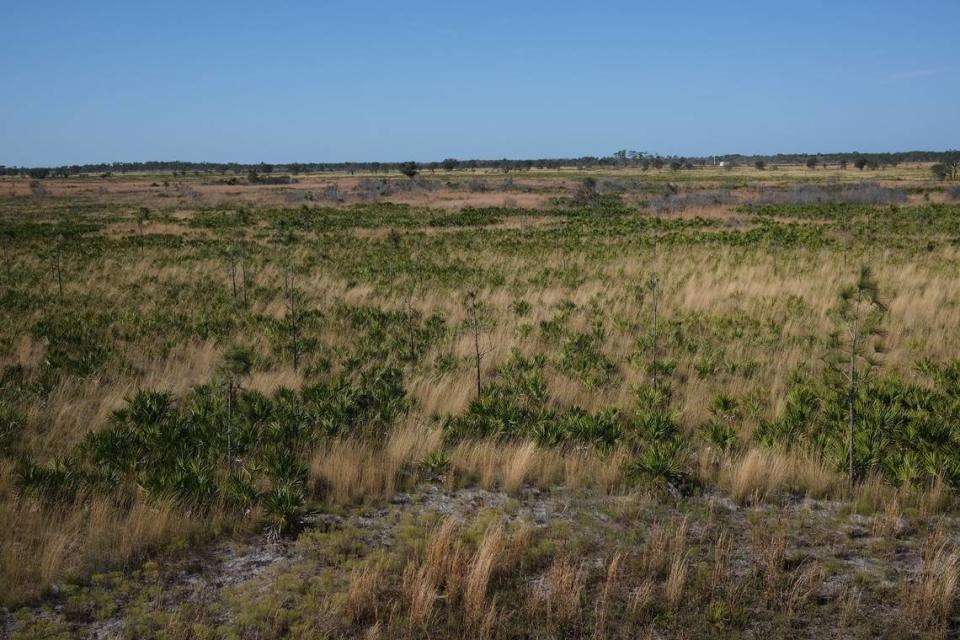
Ecologist: ‘Manatee County should be proud’
As an ecologist who has worked and played at Duette Preserve for years, Vivienne Handy says the site is a role model for conservation.
“Manatee County should be proud,” said Handy.
Handy is the founder and principal ecologist of Quest Ecology, an environmental consulting company that has helped with plans to manage and monitor habitat and wildlife at Duette.
The company is currently contracted to develop the next land management plan for the park, which includes updating practices like prescribed burns to include the latest science and lessons learned from the field.
Quest also had a significant role in monitoring wildlife populations at the preserve, including the Southeastern American kestrel — a threatened subspecies of North America’s smallest falcon — and the Florida scrub jay.
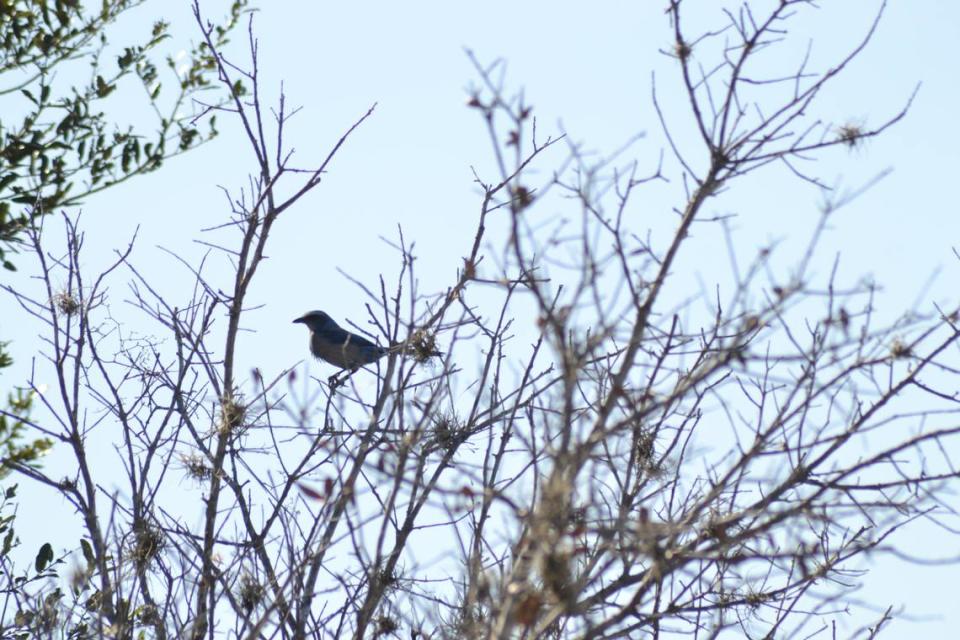
It’s not just conservation that’s important, Handy said, but properly managing the land in a way that allows nature to thrive.
“The success of the scrub jays is mostly about habitat restoration and management,” Handy said. “It’s one of the only places we can demonstrate a growing population versus declining.”
In stark contrast, a different story is playing out in Hillsborough County, where Quest Ecology is based.
“As far as we know, the last scrub jay in Hillsborough County has gone extinct in the last year or two because of a lack of action,” Handy said. “It’s very sad.”
In Manatee County, Handy said the purchase of more conservation lands and better management of adjacent state-owned properties could help the scrub jay’s local recovery story continue.
“We have the chance to make Manatee County the shining star in scrub jay conservation,” Handy said.

How to visit Duette Preserve
▪ For a schedule of the Manatee Fish & Game wagon tour, go to ManateeFishAndGame.org.
▪ The preserve can also be explored on foot, bike or horseback. Parking is available at several trailheads.
▪ Entry by vehicle is allowed on Saturdays from 11:30 a.m. to 2:30 p.m. for a fee of $4.67 per vehicle.
▪ Be aware the preserve is closed to the public on hunting weekends. Check the calendar at MyManatee.org.
▪ Hunting slots are available by reservation, as are spots at the preserve’s primitive campsite.
▪ If you go, wear closed-toe shoes and bring a hat, sunscreen, water and snacks, binoculars and your curiosity.
